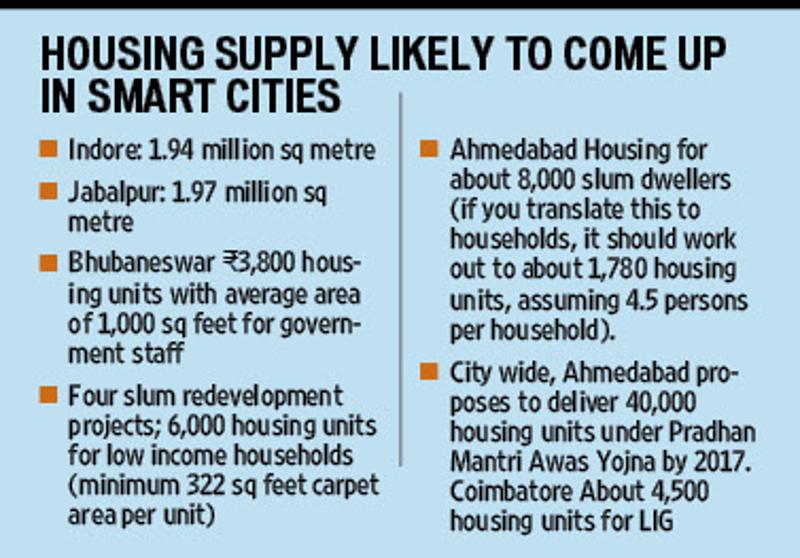Developers around the country are currently grappling with a huge unsold stock of 7 lakh units. What happens then to the additional housing stock created as part of the area-based development (ABD) plans as part of the Smart Cities Mission? Won’t it just add to the numbers?
About 89% of the Rs 48,220 crore to be invested in the first 20 smart cities will be spent on the built environment that will include urban development and housing. According to a white paper recently released by The Royal Institution of Chartered Surveyors (RICS) titled Urban Makeover:Evolution or Revolution? the top three cities investing in the built environment include Bhubaneswar, Indore and Jabalpur. Indore expects to construct 1.94 million sq m and Jabalpur 1.97 million sq m of green buildings space.
Though it’s too early to forecast how much additional housing or commercial realty stock will get created in the smart cities as part of ABD, planners will have to ensure that both mid-segment as well as affordable options are made available to buyers. This is important because most of the redevelopment is planned for areas located in the heart of the city and not in the periphery, thus making real estate expensive.
According to data available, Bhubaneswar will have 3,800 housing units with an average area of 1,000 sq ft for government staff and four slum redevelopment projects with 6,000 housing units for low income households. At Ahmedabad, housing for about 8,000 slum dwellers will be developed and Coimbatore will have about 4,500 housing units.
Improved facilities in an area will by default impact real estate values in an area. Residential or commercial units retailing at Rs X will by default be sold at Rs 5X over a few years with improvements in infrastructure kicking in and depending on market conditions, say experts.
Experts also say that smart city plans by themselves at this point in time do not mean much, and have to be translated to detailed ABD plans based on existing state laws – it is only then that specific details regarding amount of built-up area will emerge. Also, government funds will not be used in all of the development; the private sector is expected to partake significantly in delivery – so who does what and how much is also something that will emerge in the months to come.
Read full details from Hindustan Times

